Adding Value to Gold

Scotland’s first ever commercial goldmine proves that precious metals can be worth more than their weight in gold
HELMSDALE, 1830: The harbourmaster watched what he previously thought was impossible. In front of his eyes, rock is “pulverised and put into conical crucibles which are then put into a furnace, and by some chemical process, the gold falls down in a molten state into the short conical apex at the bottom of the crucible and retains that shape after cooling.”
The Kildonan Gold Rush of 1868 had ended 12 years previously, but the lure of riches still drew the odd opportunist to the east coast of Scotland. And they didn’t come any odder than John Peter Dunker, whose claims he could abstract gold from the hardest stone caused a sensation amongst the locals. However, the harbourmaster’s account conflicted with an official investigation into Dunker, real name, Kagenbusch. Amid suspicion he was a fraud and a drunk, the police statement said he had been “found out. His works are stopped, and a detective from London has been down making inquiries.”
It took more than a century before the commercial extraction of Scottish gold seemed once again a legitimate prospect. In the 1980s, an Irish firm called Ennex International identified an outcrop of gold-bearing rock in the rugged hills of the west, near Tyndrum. After several years exploring the area, the company drilled an adit – a horizontal mine – at Cononish. This was then acquired by the Caledonian Mining Co, which gained full planning permission in 1995. However, before it could produce any gold, the metal’s spot price crashed and the mine was deemed unviable.
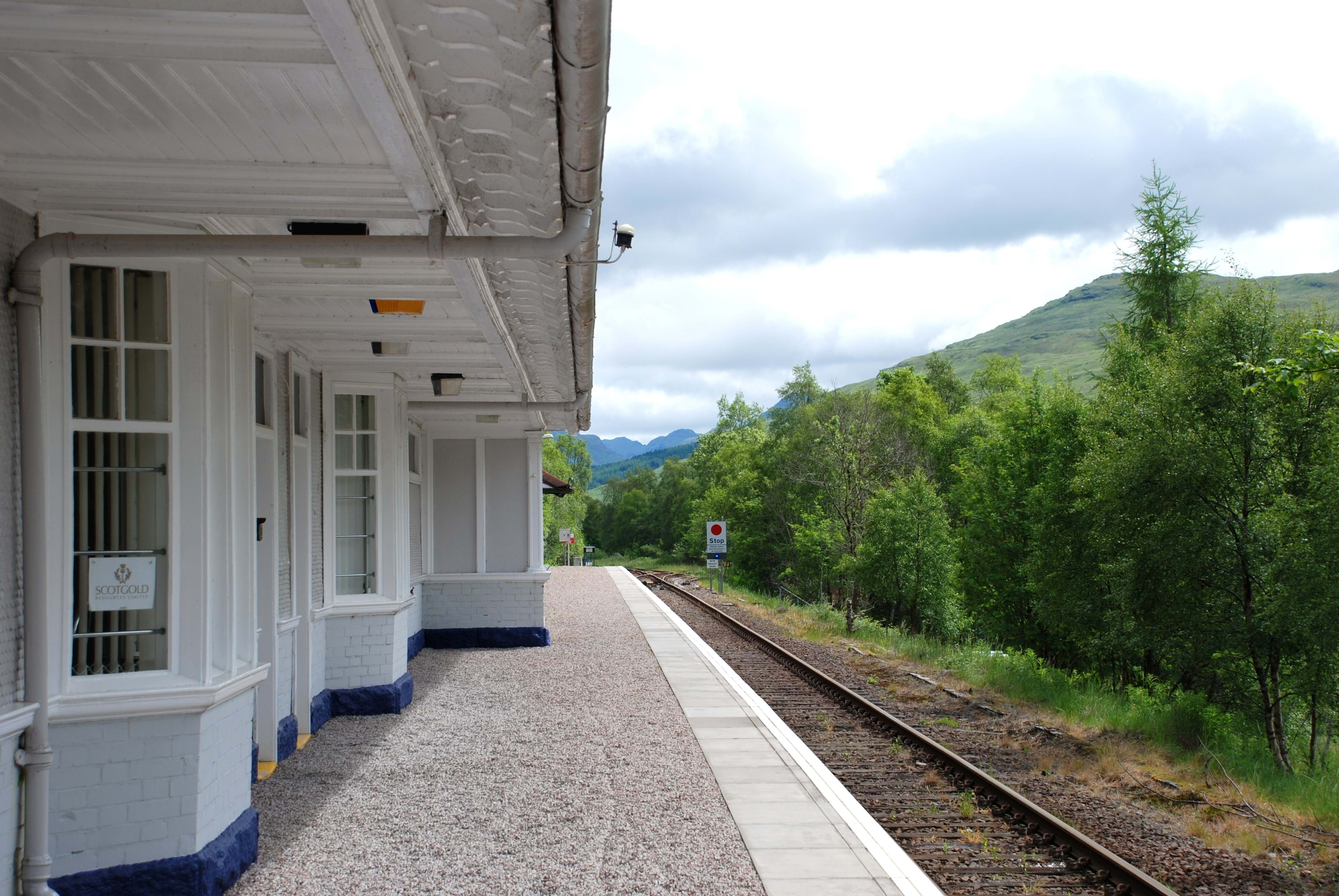
Tyndrum, 2017: Back to the present day, I find myself driving along a steep, winding road to Upper Tyndrum train station. A couple of Italian backpackers wave at me, caked in sweat as they tackle a steep incline in the rarest of things – Scottish sunshine accidently left on full power. As I pull into one of the station’s four parking spaces, there’s a splosh of water beside me. I apologise to Neville, my passenger.
Neville is a friend’s goldfish. I’ve been roped into transporting him from the nearby port town, Oban, to a new home down south. At one point, I think Neville sees the funny side of arriving for a goldmine tour with a goldfish, but three seconds later he seemingly forgets all about it. The train station also houses the offices of Scotgold, and I’m here to find out how the company is succeeding where Dunker, Ennex and Caledonia failed.
Brand Scotland
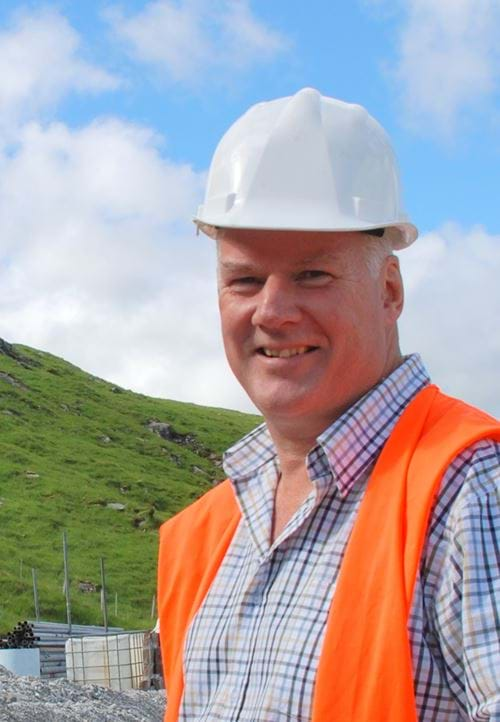
I leave my car in a shady spot, with the window open a crack for Neville’s sake. Richard Gray, CEO of Scotgold, drives me through the Cononish Glen to his mine. He tells me about how not only had the ongoing bulk processing trial managed to squeeze commercial gold from Scottish rock for the first time, but how it had also been possible to add value to the gold.
“From the first batch we produced from this trial we sold 12 oz as minted rounds, which averaged a 450% premium. More recently, we have sold another batch to the jewellery trade – they are paying over a 30% premium on that.”
Earlier in his career, mining engineer Gray rose through the ranks in South African gold mines, before spending some time in West Africa. There, ‘small’ mines wouldn’t get off the ground without producing 100,000 oz a year from reserves of a million or two. Now he finds himself in Cononish, with full-scale production at 25,000 oz a year, and reserves of just under 200,000 oz.
What African gold doesn’t have, however, is an intangible mystique on the consumer market. Welsh gold, for example, is favoured by British royalty and sells at a huge premium, despite the fact that all gold is elementally identical once refined. Gray hopes that this is something that can be reproduced in Scotland, world-famous for its whisky, folklore and romantic setting.
“I think it’s just the whole ‘Brand Scotland’ thing”, he says. “My niece from Surrey had her heart set on a Scottish wedding so they rented Culzean Castle, came out with bagpipes and kilts. If you’re paying that much, then you might as well have a ring that’s made from genuine Scottish gold. If you’ve got to pay a little bit more for that, then so what?”
Scotgold has been working with the Edinburgh Assay Office to ensure that once the gold is out of its hands, it cannot be tainted with gold of any other origin. The result is that it can be impressed with a unique stag’s head mark, verifying its Scottish origin. The equivalent used in Welsh gold is a dragon.
“The difference between us and the Welsh gold is that they are not actually producing anything [any more]. They’ve got a little bit left from when they were mining, apparently, so what they are selling is not pure Welsh gold – it is just gold that has been bought that they say has a touch of Welsh gold in it.
“So Welsh gold is much more of a marketing tool than it is a real entity in itself, whereas we have a proven provenance all the way through – this is the real McCoy.”
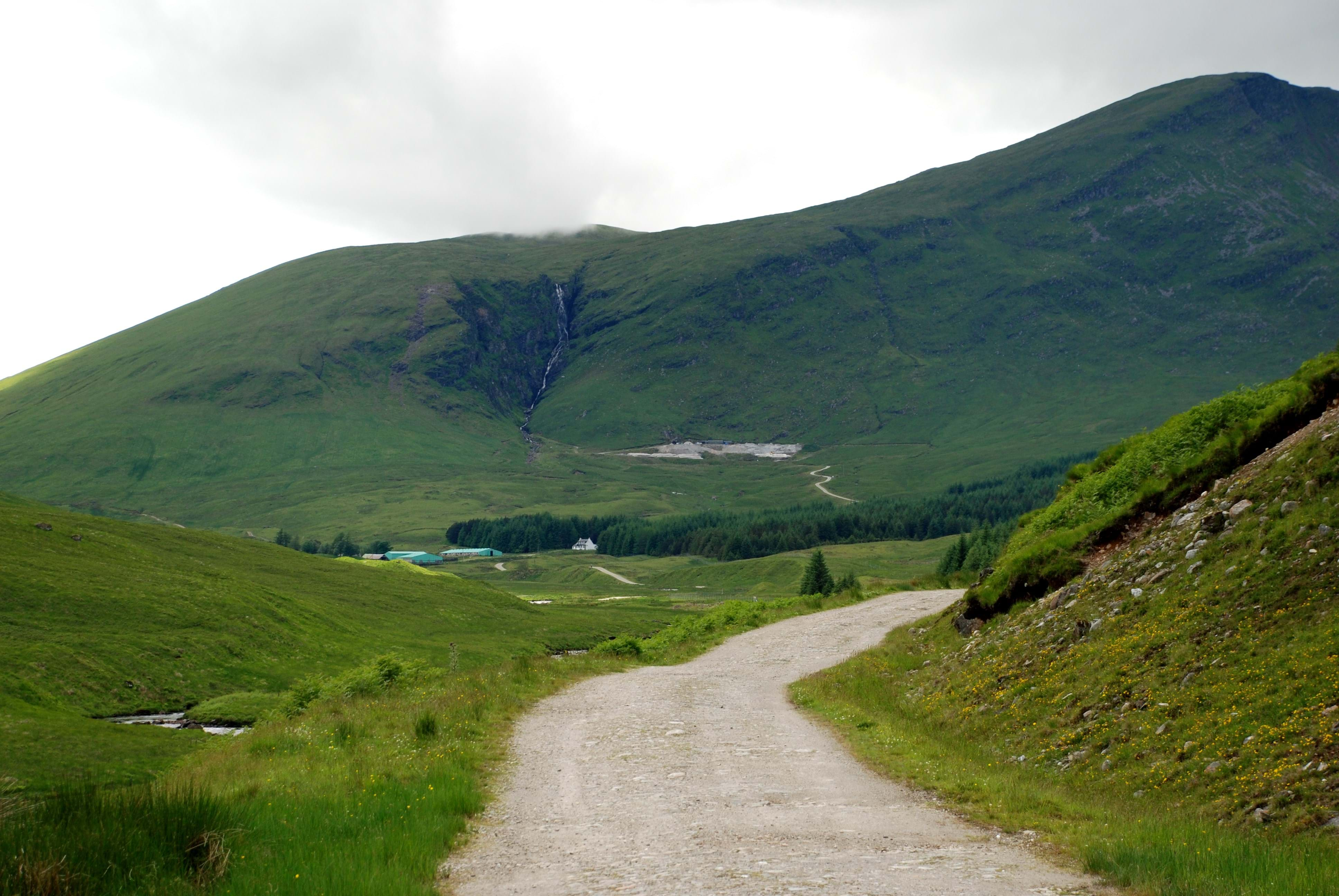
As we discuss this, our destination becomes clear. At the end of our track stands Beinn Chuirn, an imposing mountain 880 m tall. Streaking down its face in a manner similar to the seam of quartz within is a glistening waterfall, leading to a small grey platform. As we draw closer, the platform separates into haphazard mounds of rubble, fabric bags about 10 m long, and two corrugated aluminium buildings not dissimilar to Anderson shelters or Nissen huts from the Second World War. Low-frequency rumblings emanate from one of them as Scotgold’s bulk processing trial continues.
The trial itself is anticipated to end in a few months. Next year, the construction of a full-scale processing plant is planned, which will then be followed by eight years of production: 24 hours a day, six days a week, from 2019. Despite the trial’s progress pointing to a considerable premium existing for Scottish gold, Gray’s business model is designed to ensure that the future of Scottish gold mining doesn’t rely upon it.
“All this value adding – nothing of that is built in to our economic model. Our investment model is based on selling at the spot value, so this is all icing on the cake,” says Gray.
Gold chain
Before visiting the processing plant, I’m thankful to escape the sun and dive into the mine originally hewn by Ennex three decades ago. Gray introduces me to Scotgold’s non-executive director, Christopher Sangster, who unlocks the rusted iron gates and we head inside.
We quickly become reliant on our torches as the light vanishes and is replaced by a timeless coolness exuded by the rocks. Sangster jokes that it is unusual for the outside to be warmer than inside the mine, before informing me that we are beneath 70 m, then 200 m, of rock only a few paces later. Directly under the waterfall, we tramp through ankle-deep water as I shield my camera from the drips percolating from above. Every time I ask a question, Gray and Sangster pause before answering, to let the echoes of our footfalls dissipate through the tunnel’s kilometre length. The tunnel itself is barren, with no evidence of recent mining due to the bulk trial only requiring piles of rock left outside the mine by Caledonia’s operations.

Eventually, we reach the seam where that rubble originated. About 1.5 m wide, I recognise the white quartz in it, but no gold. Sangster tells me the gold particles are very fine – mostly 50 µm in size. He points out black striations, which contain gold in sulphide material.
While the seam is expected to yield an impressive 10 g of gold – or two wedding rings – in a ton of rock, 75% of this cannot be marketed as Scottish. This is because the microscopic fragments of gold are contained within two different rock types, galena and pyrite.
Typically, gold found in both rocks would be leached simultaneously using a cyanidation process. However, due to Cononish being located in the Loch Lomond and The Trossachs National Park, environmental concerns meant that this was not possible. This led to an alternative approach to eke value from the mine.
Gray explains: “So what we are producing is basically two products. The first main product, which is the bulk of it, is a flotation concentrate. In this trial we are using gravity, but ultimately it will be produced by flotation. That concentrate would then get shipped to a smelter in Europe and get sold, so we get paid for the content in it and we pay a smelting fee – that’s how we get the value out.”
But because the gold is smelted and refined abroad it cannot be sold as Scottish gold.
“The other product is from the galena, we can actually get a free gold. We can get a gravity concentrate out which is high enough grade to be directly smeltable.”
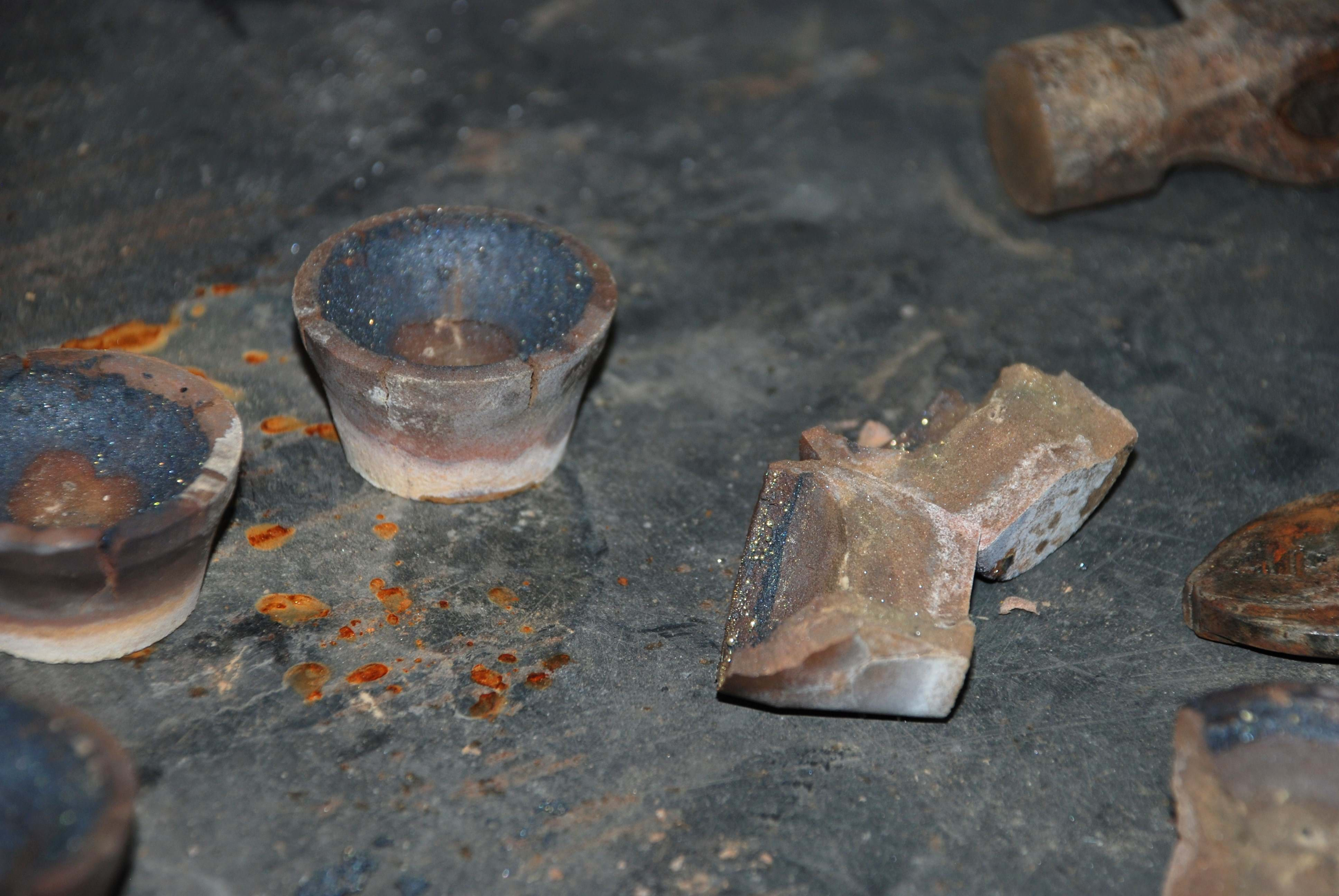
Smelting on-site produces a doré button, which is 65% gold, 35% silver, and has traces of lead and other elements. This latter product, representing 6,000 oz a year at full production, incurs some extra costs before it can be emblazoned with the stag’s head.
“We end up with a doré button that then goes to the Edinburgh assay office. They assay it and weigh it to know how much gold is in there. It then goes off to the refinery in London where it is refined as a batch so it doesn’t get mixed in with anyone else’s. It is then made into casting grain and gets sold back to the jewellers again.
“The refinery has been audited by Edinburgh, who have overall control of the chain of custody. They also add a secret ingredient: a rare element that only the assay office and the refinery know. They know what the jewellers bought in terms of our gold, and they then put it under the mass spectrometer to test for this particular element to verify it is actually our gold. They can then hallmark it and put our mark on it with the stag’s head.”
The circular entrance to the mine, now our exit, discloses the details in the hillside beyond bit by bit as our eyes adjust to the light. Walking halfway between the adit and the processing plant, Gray explains that Scotgold’s strategy is to sell both products separately when a premium exists, and if it drops, then the galena fraction is to be added to the pyrite-derived concentrate.
“All the gold we can sell on the spot, but to prove the Scottish provenance there are some extra costs for us – so we only do that if there’s a market for it at a premium.”
Badge of honour
We make our way round the corrugated huts beside the piles of precious rubble that are to be fed into the bucket crusher for gold production. Gray describes what I am about to see: “This is not designed as the ideal processing plant. This is a cheap and simple plant that will get a fair chunk of the gold out.”
Sangster adds: “Small mines tend not to be the place for technological breakthroughs. It’s such a difficult operation that if you try something and it fails – you’re dead!”

While my tour of the processing plant does not contain many surprises, it becomes clear that the trial itself has afforded further opportunities to minimise risk and add value to the business. The most significant of these is how waste tailings are being processed, which led to a further application for planning permission.
Away from the noisy machinery, Gray and I survey the valley before us. He draws a wide boundary in the air with his hands: “The original design was a conventional impoundment dam – you build a dam across the valley, pump all the water in it, the solids settle and you re-circulate the water back. That was approved in 2012 in our planning application.
“The issue with that is because of the topography here, you have to have a big dam before you can start filling anything and that’s about £5m [US$6.4m] of capital investment just to get it started. So if you’re going to spend that, you have to start operating at full scale and can’t scale it down. When we came to do this trial, we said there has to be another way to dispose of those tails, because we’re only talking about a couple of thousand tons.”
Beneath our feet lies the solution to this, as employed during the trial period – geofabric bags. Filled with wet slurry, liquid dribbles out into settlement ponds below. The bags can then be vegetated, benefitting the landscape of the national park. Scotgold realised that such a system can be used for a ‘pay as you go’ approach, giving them financial benefits and flexibility to run the mine at half production, extending its lifetime to 16 years. Furthermore, the cost of the bags themselves can be reduced by making modifications to the processing of tailings.

“We’re going for what we call dry stacks – instead of dewatering in the bag, we will add another process in the plant where we filter press and dewater the slurry so we’ll end up with dry sand coming out of the tail end. We will then move this with a digger and a truck to create drumlins around the valley. We will use a landscape architect to design the shape and the forms to mimic natural glacial moraine you see in this part of the world so you end up with a landscape that looks like it was put there by a glacier.
“There are huge benefits in terms of ultimate environmental impacts and big benefits for us, because we’re still spending the same amount of money but over the lifetime of the mine. It’s spent as an operating cost over eight years, or however long it may take, rather than having to pay upfront.
“That is what makes it feasible then to say we can scale down what we start with, get it up and running and then when we’re making money we will use our own money rather than borrowing it to upgrade ourselves.”
The dam was a major part of the permitting approved in 2012, so Scotgold has had to go back through the permitting process. Gray believes, however, that this is unlikely to be a problem with the national park authority.
“We could say tomorrow – actually, we’ve got the money, we’re going to go and build it the way it’s permitted. They wouldn’t be happy because they like this new way better, so the point is to try and get this thing through because it is better for us and everyone.”
Developing solutions that are sympathetic with the Scottish landscape may be an additional way to add value to Scotgold’s wider operations, as it has also sought licences to operate in Europe.
“We’ve put our hat in the ring for a few properties in Europe. For us, looking in Europe – the fact that we have been given permission in a national park in Scotland is a badge of honour.”
Golden future

As I remove my PPE at the end of the tour, we talk about what the future holds for Scotgold. Gray becomes visibly excited while explaining another potential method of Scotgold increasing the profitability of its gold. He says that gold from the mine could one day be processed using the cyanidation process, but elsewhere in Scotland. This could lower costs, as both the pyrite and galena rock fractions are amenable to the process; perhaps more interestingly, it could also increase the fraction to be sold as Scottish gold, since through batch processing, the whole chain would be traceable.
“Cyanidation is a more cost effective solution and that’s a fact of life. We’ve made enquiries and one option would be somewhere like Grangemouth, which has a brownfield petrochemical area where companies already have cyanide permits. An option would be to set up a cyanide leach circuit there, and then we can keep that gold here potentially as Scottish gold.”
The tour is over, and Gray drives me back to my car, no longer shaded, due to the sun’s movement. I joke to Gray that we are probably too far from the nearest pet shop for me to find a doppelganger to replace my friend’s lightly-poached pet. He laughs, but doesn’t leave the car park until I confirm that the fish is swimming happily.
We go our separate ways, and I find the nearest restaurant. It’s a fish and chip shop. As I sidle back into the driver’s seat, belly full, I can’t meet Neville’s eye. As we filter our way home through the glens in an awkward silence, I’m left wondering what the harbourmaster would have made of it all.
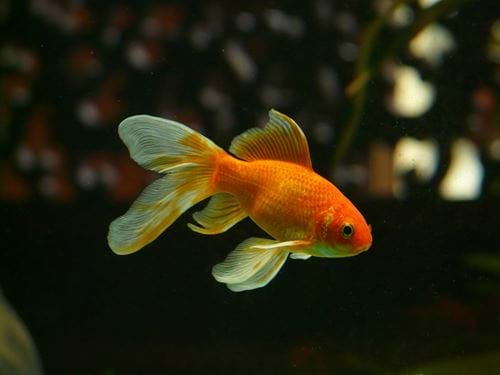
Disclaimer: No goldfish were harmed in the writing of this feature
Recent Editions
Catch up on the latest news, views and jobs from The Chemical Engineer. Below are the four latest issues. View a wider selection of the archive from within the Magazine section of this site.




